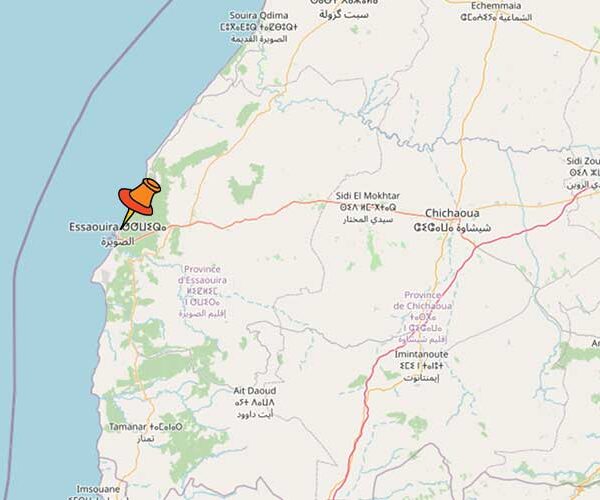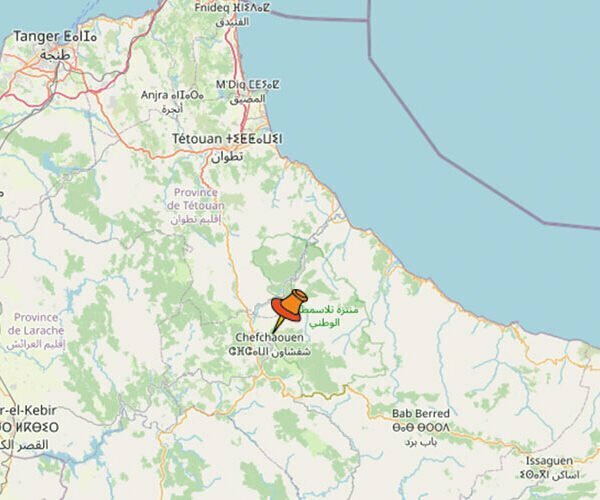No one has ever had a Morocco tour without coming across a hand-shaped symbol that is often found in Moroccan jewelry, clothing and art. This symbol is known as the Hand of Fatima (Hamsa), and with all its shapes, materials and sizes usually fascinates and charms the eyes of travelers who go on buying them obliviously as a must-buy souvenir from Morocco.
According to the local Moroccan tales this symbol is believed to have some sort of magical power. However, have you ever wondered what does that symbol represent and what those magical powers are? Let us take you on a brief journey across the history and tradition of that symbol!
Hand of Fatima (Hamsa): a North African and Middle Eastern symbol with ancient and multicultural origins
The Hamsa, also known as the Hand of Fatima has a remarkable history and symbolism throughout other cultures apart from that of Morocco. Indeed, the Hamsa is not recent nor modern and it is not limited to the Moroccan culture only.
In fact, the images of human hand have had a powerful appeal throughout the ages; back in time of ancient Egypt, where the hand was a symbol or fortitude and power, to the time of the Roman Empire, whose legacy stretched along North Africa (Al Maghreb) where modern Morocco is located. The image of the hand has been long linked with preventative magic, as a gesture to proclaim, protect, ward off evil and give blessings and comfort can be culturally universal.
A hand, as amulet imagery arose in many cultures such as Ancient Egyptian, Phoenician, Roman, Nubian, Amazigh (Berber) and of course Arab as well as Christian and Jewish. Wars, travels and trade played a huge role in spreading the Hamsa symbol throughout civilization, allowing for each culture to associate and ascribe it to their own desired outcome and philosophy.
As a matter of fact, during the Roman period the hand appears in mosaic often as an abstract triangle, the symbol of female and associated with the symbol of fish or serpent that represents male, both making up the number five symbol in Roman letters. The Amazigh (Berber) and Arabs later adopted that symbol to which they were exposed because of the proliferation of Roman mosaic in the Roman territories in North Africa and beyond.
Hand of Fatima (Hamsa): How it was adopted by Moroccan culture, both Arab and Amazigh (Berber)
Subsequently, Moroccans imbued it with their own cultural and religious beliefs. For example, from its association with as a number came the symbolic amulet “Hamsa”, Arabic for number five, linked also with the five fingers of the hand, the five pillars of Islam, and the five letters of the name of God in Arabic “Allah” whose letters form what seems to be an open hand when written out. Later, the hand itself took on a symbolic meaning and became an amulet known as “the hand of Fatima”, named after the daughter of the Prophet Muhammad (pbuh) from his first wife, Khadija.
The hand, according to the Moroccan belief, protects from and wards off the evil eye or the eye of envy. It appears in many forms and shapes throughout the many regions of Morocco, augmenting its protective powers with the addition of blue stones which symbolize the eye of the other.
During your Morocco tour, you will come across many forms of the Hamsa. In the northern regions for instance, you will mainly find it made of silver or copper with beautiful adorned frills. In the High and Middle Atlas regions of Morocco, the Hamsa is not only right-handed and symmetrical but also as an abstract version with a sun or moon in the palm surrounded by five semicircular forms. Sometimes you might find the shape of an arched doorway with two key-shaped cutouts and hands protruding.
Nonetheless, the most popular and available form of the Hamsa comes in the form of jewelry (necklaces, bracelets and earrings) so it can be worn as adornment and protect at the same time.
Interestingly enough, the most significant part about the Hamsa is how and when it is usually used in the Moroccan traditions. Some people put it on their door knockers so that when visitors come, they first touch it and thereby get stripped of all the evil that they might bring with them. Others put it around their neck in the form of necklace for an everyday protection. Some families put it around the wrist of their new born babies or young toddler boys who got recently circumcised because they believe that kids are most exposed to evil eye!
However, from an Islamic perspective, Hamsa can be a sign of polytheism, for God explicitly commands his believers in Quran to rely upon him and him only in their everyday toiling and all other matters including protection from evil eye and witchcraft, because only he is the all-powerful and all-protecting. Hence, we can deduce that the tradition of Hamsa/hand of Fatima is more cultural rather than religious.
All in all, the idea of the Hamsa or Hand of Fatima differ from a region to another in Morocco. That’s why we recommend you always ask your tour guide about the significance of the symbol according to the area throughout your Morocco trip.
Hamsa in Judaism: Hamsa / Hand of Fatima / Hand of Miriam
But have you considered that there are commonalities between Islam and Judaism more than there are differences, and the Hamsa is merely one aspect of an extended topic? Have you ever asked yourself about other similarities that exist between Islam and Judaism?! In future blogs we hope to highlight the many that exist between these two major and intriguing Abrahamic religions.
Both Islam and Judaism are identically similar in many beliefs and aspects of worship. Accordingly, the Hamsa symbol’s philosophy is quite similar in these major religions. As for the Hamsa or Hand of Fatima is believed to protect from and ward off evil eye or eye of envy in Islamic culture, similar iconography is found in Judaism.
The hand in general has quite of a significance and virtue in Judaism. According to the Jewish belief, “Hamsa” or “Hand of Fatima” (also called “Hand of Miriam” in Judaism) represents blessing, claiming that Jacob, the father of Joseph, blessed his children with his hands, receiving his command to do so from God. Hence, it became known as the hand of blessing or the hand of God. It is in essence a reminder of God for Jews.
Nonetheless, the foundation of Hamsa in Hebrew culture traces back, according to Jewish historians, to the time of Near Eastern pagan societies: Mesopotamia and Phoenicia, when and where it originally and primarily represented the hand of “Ishtar”, their goddess.
Interestingly enough, the hand back then also represented protection since it was considered like the hand of their loving mother, Ishtar. Later, the hand was adopted by certain communities within Judaism among which Hamsa became most popular and was mentioned in the Talmud as well, as the “Hand of Miriam”, the sister of the prophet Moses and Aaron. The Hand of Miriam is considered a powerful amulet by which the Jewish people ward off evil spirits in general.
The hand figures in Kabbalah as t”Hum”, “Hamsa” or “Himish” which means the same in Arabic, the number five. It is often inscribed in Hebrew with three onomatopoeic sounds of spitting, which, according to Jews, drives away the evil eye or spirit. In that matter, the talisman is also believed to bring good fortune and commemorate the virtues of Miriam.
Furthermore, the ”yad” (hand) is used as a place marker for reading the Torah and a similar hand-shape marker with a pointed finger (shahada finger) or “finger or testimony”, is used for Quran readings as well.
(Content provided by Imad, edited by Morocco Local Insider)
Read also: 5 Do’s & Don’ts: Important Guide to Photography in Morocco




thank you for posting this amazing resource